Inbound marketing has been the go-to marketing strategy for many businesses for some time now. However, the field is constantly evolving, and what used to work a few years ago may not be as effective today.
In this article, we will explore how inbound marketing is changing and what you can do to keep up with the pace of change.
Their expertise has helped Nextiva grow its brand and overall business
The Decline of Traditional Inbound Marketing
Inbound marketing is any marketing activity that brings leads and customers to you rather than you heading out into the world to find them.
It involves creating relevant and informative content, optimizing for search engines, leveraging social media, and nurturing leads to drive organic traffic,.
The definition of inbound marketing has expanded beyond its traditional focus on content marketing and SEO. The old model is rapidly changing, necessitating a broader perspective. Marketers must adapt to this evolution and consider newer strategies that encompass branding and long-term value creation.
This downward trend is evident in the decreasing inbound traffic and leads observed across various industries.
Several factors contribute to this decline, including:
- Declining Search Traffic: As competition for online visibility intensifies, it becomes more challenging for businesses to rank high in search engine results. The saturation of content and the ever-changing search algorithms contribute to the decline in organic search traffic.
- Poor Engagement Metrics: Traditional methods of inbound marketing, such as long-form content and nurturing sequences, are not generating the same level of engagement as before. People’s preferences and browsing habits have evolved, leading to shorter attention spans and a preference for more interactive and visually engaging content.
- Shifting Consumer Behavior: Today’s consumers are more selective and discerning when it comes to the content they consume and the brands they engage with. They are seeking personalized experiences and relevant information, and not reading as much long-form content.
- Saturation of Marketing Channels: With the proliferation of marketing channels, including social media platforms, email marketing, and various content formats, consumers are being inundated with marketing messages from all directions. This saturation makes it increasingly difficult for businesses to stand out and capture audience attention.
- Nurturing Sequences Are Less Effective: With consumers overwhelmed by a flood of content, their attention spans have shortened, making it harder for lengthy nurturing sequences to engage them effectively. Additionally, consumers now prefer personalized and self-guided exploration, while businesses face stiff competition and must deliver more targeted and tailored experiences to capture their attention.
So, what are some of the new strategies that businesses are using to stay ahead of the curve?
Dive Deeper: What Is Inbound Marketing?
How to Adapt to the Changing Landscape of Inbound Marketing
Here are some tips to help you keep up with the changing landscape of inbound marketing.
Focus on Quality over Quantity
Creating valuable content is more important than ever. In the past, marketers used to focus on churning out as much content as possible. However, this is no longer the case. Today, people are looking for high-quality content that is relevant, engaging and informative.
You might think that as long as your content is better than average, you have a good chance of ranking on the first page of Google. Unfortunately, that’s usually not the case.
When creating excellent content, think about what your audience wants and needs. What are their pain points and how can you help solve them?
Once you’ve figured that out, create 10X content, which is content that is 10 times better than anything else you can find in the SERPs:
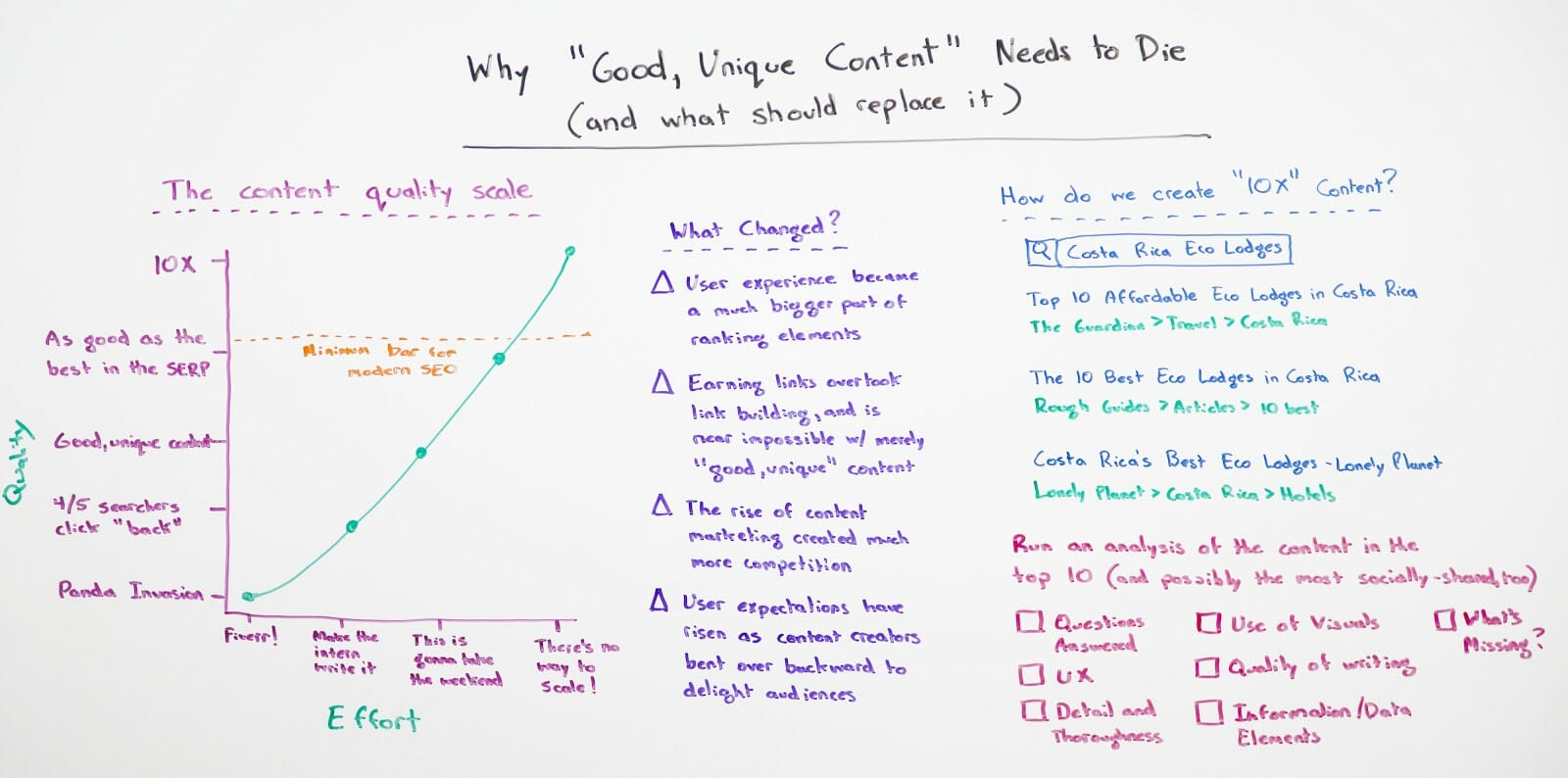
By creating content that addresses these issues, you’ll be more likely to drive engagement and build a loyal audience. In other words, focus on creating fewer but better-quality pieces of content.
Dive Deeper: Absolutely Everything You Need to Know About 10x Content
Use Social Media to Amplify Your Content
Social media has become a critical tool for inbound marketing as it’s a great way, and often free, way to reach a broader audience.

When using social media, it’s important to understand which platforms your audience is most active on. For example, if your target audience is made up of B2B brands, you should focus primarily on LinkedIn. If your audience is mostly college students, try Instagram or TikTok. By tailoring your social media strategy to your audience, you’ll be more likely to see success.
Here are several ways you can leverage social media for inbound marketing:
- Build Brand Awareness: Consistently share valuable content, including blog posts, videos, infographics and curated industry news, to establish your brand as a thought leader and engage with your target audience. Use a consistent brand voice, visual identity and hashtags to enhance brand recognition.
- Drive Traffic to Your Website: When you share your content to a social platform, always link back to your website where the content lives (presumably). Include clear calls-to-action (CTAs) in your social media posts, directing users to relevant landing pages, blog posts or gated content that aligns with their interests and needs.
- Engage with Your Audience: Engage with your followers by responding to comments, messages and mentions. Use social listening tools to monitor conversations and join relevant discussions. By building relationships, you can foster trust, loyalty and word-of-mouth referrals.
- Generate Leads and Conversions: Leverage lead generation forms, CTAs and landing pages directly on social media platforms, or use social media to drive traffic to optimized landing pages on your website. Provide valuable content in exchange for contact information to build your email list and nurture leads further down the sales funnel.
- Social Advertising: Paid social media advertising can complement your inbound marketing efforts by targeting specific demographics, interests and behaviors. Platforms like Facebook, Instagram, LinkedIn and Twitter offer robust advertising options to reach your ideal audience. Use targeted ads, sponsored content and remarketing campaigns to amplify the reach of your content and drive conversions.
- User-Generated Content and Influencer Marketing: Encourage your audience to create and share user-generated content related to your brand. User testimonials, reviews and UGC can serve as powerful social proof and contribute to your inbound marketing efforts. Additionally, consider collaborating with influencers who align with your brand to reach their engaged followers and leverage their credibility and influence.
Dive Deeper:
* How Remarketing Can Help Increase Conversions
* The Types of Videos to Use at Each Stage of the Marketing Funnel
* Social Media Marketing for Business Owners: How to Get Started in 2023
Personalize Your Content
By using personalized content, businesses can create a more engaging and relevant experience for their customers. This can lead to increased sales, improved customer satisfaction, and stronger brand loyalty.
Personalized content is any type of content that is tailored to the individual user, for example:
- A website that recommends products to users based on their past purchases.
- An email newsletter that includes articles and offers that are relevant to the user’s interests.
- A social media feed that shows posts from friends, family, and brands that the user is most likely to be interested in.
- A search engine that results in more relevant results based on the user’s search history.
- A recommendation engine that suggests products or services that the user is likely to be interested in.
Consumers are looking for personalized content that speaks directly to them. Use data and analytics to identify your audience’s preferences and interests, and tailor your content to meet their needs.
This can be done by using data about the user’s interests, demographics or past behavior. For instance, one way to personalize your content is to create buyer personas. A buyer persona is a fictional representation of your ideal customer:
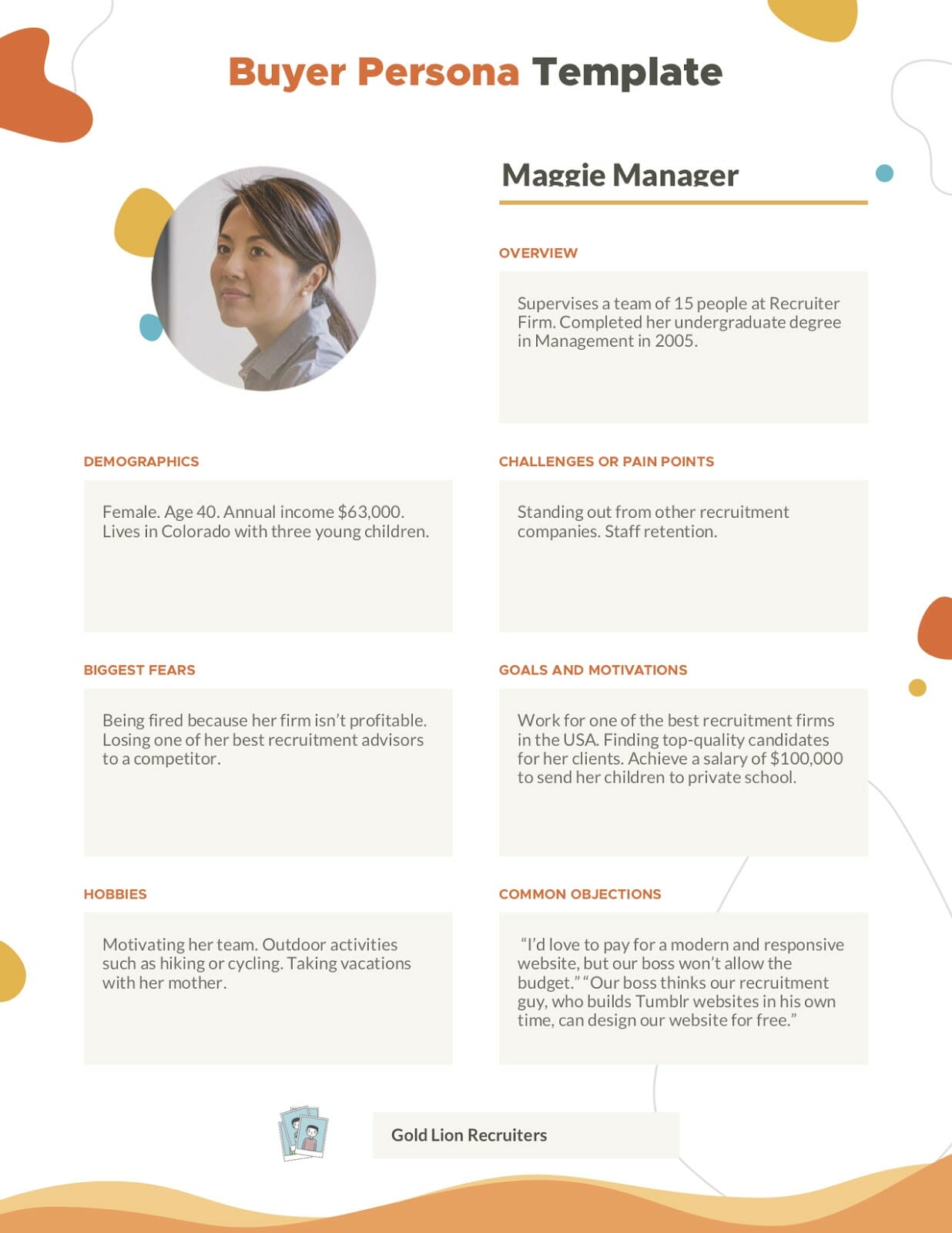
By creating buyer personas, you can better understand your audience’s pain points, interests, and needs, and create content that speaks directly to them.
Use AI to Boost Efficiency
Artificial intelligence (AI) can help streamline your inbound marketing efforts by automating tasks such as lead scoring, email campaigns and social media management. This allows you to save time and resources while still delivering quality content.
Here are several ways you can leverage AI to boost efficiency:
- Personalized Content Recommendations: AI-powered algorithms can analyze user behavior, preferences and past interactions to deliver personalized content recommendations. Netflix and Amazon are two perfect examples of this. By understanding individual interests and needs, you can provide tailored content experiences that resonate with your audience.
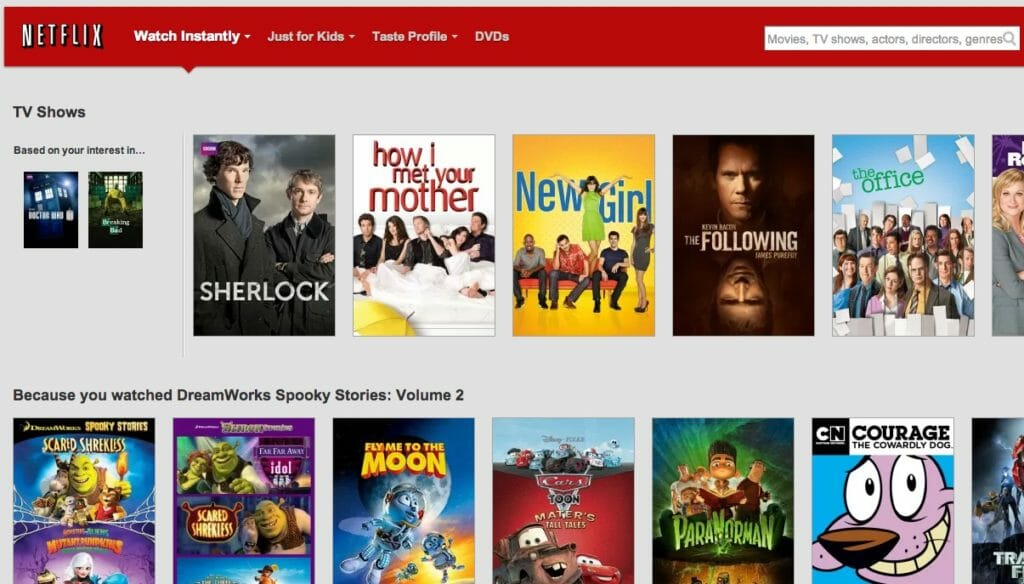
- Automated Lead Scoring and Nurturing: AI can automate lead scoring by analyzing various data points, such as website activity, engagement with emails or social media, and demographic information. This helps prioritize and segment leads based on their likelihood to convert, enabling more targeted and personalized lead nurturing campaigns. AI can also automate lead nurturing processes by delivering personalized and timely content to move leads through the sales funnel.
- Chatbots and Virtual Assistants: AI-powered chatbots and virtual assistants can handle routine customer inquiries and provide instant support, enhancing the customer experience and freeing up valuable resources. Chatbots can engage with website visitors, answer frequently asked questions, qualify leads, and provide relevant information.
- Predictive Analytics and Forecasting: AI algorithms can analyze historical data, trends and patterns to generate predictive analytics and forecasting models. This can help you make data-driven decisions, such as identifying the best channels for lead generation, optimizing content creation strategies, and predicting customer behavior.
- Social Media Monitoring and Sentiment Analysis: AI-powered tools can monitor social media platforms, analyzing user-generated content and sentiment to gain valuable insights into brand perception, customer sentiment, and emerging trends. This enables you to proactively engage with your audience, address concerns, and identify opportunities for content creation or product improvements.
- Automated Content Creation and Optimization: AI can automate content creation processes by generating reports, blog posts or social media captions based on data inputs. It can also assist in optimizing content by analyzing performance metrics and suggesting improvements for headlines, CTAs or visuals. AI-driven content optimization tools can help you create more engaging and relevant content, saving time and improving results.
When using AI, it’s important to remember that it’s not a replacement for human interaction. While this technology like ChatGPT and others can help automate certain tasks, it’s still important to have a human touch when it comes to engaging with your audience.
Dive Deeper: 10 Easy Ways to Get Started with Marketing AI (Artificial Intelligence)
Embrace a Omni-Channel Approach
Gone are the days when businesses could rely on one or two marketing channels. Nowadays, consumers are active across multiple channels, and businesses need to be too.
The key to keep in mind, though, is that many companies are leveraging a multi-channel approach when they need to be leveraging an omnichannel approach. We’re seeing refunds go down when you leverage omnichannel and create congruent experiences. Nike, Disney, they all do a great job of this.
An omnichannel approach, including email marketing, social media, video marketing, is similar to multi-channel, but more integrated:
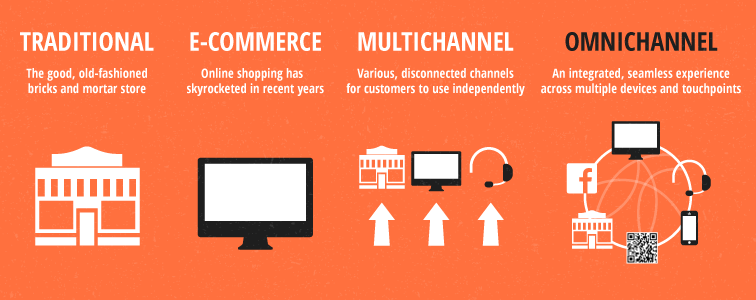
When using a omnichannel approach, it’s important to have a consistent message across all channels. By having a consistent message, you’ll be more likely to build brand recognition and loyalty.
Dive Deeper: Omnichannel Marketing: Using the Content Sprout Method to Overcome Info Overload
Get Creative!
SEO is becoming harder, social media is becoming harder, emails aren’t as effective. But that happens with all marketing channels, including television advertising and pay-per-click ads. It doesn’t matter what it is. The more competitive something gets, the harder it’s going become to produce the same ROI. That’s just normal.
Most people and brands are just doing the same thing that everyone else is doing. But the companies that are getting creative, whether it’s not doing influencer marketing like everyone else, but instead doing a partnership with a celebrity like Ryan Reynolds, like Mint Mobile did.
Reynolds is set to receive about $300 million from his stake in Mint Mobile. After his fame helped put the mobile company on the map and grow it, Mint Mobile was sold to T-Mobile for $1.35 billion:
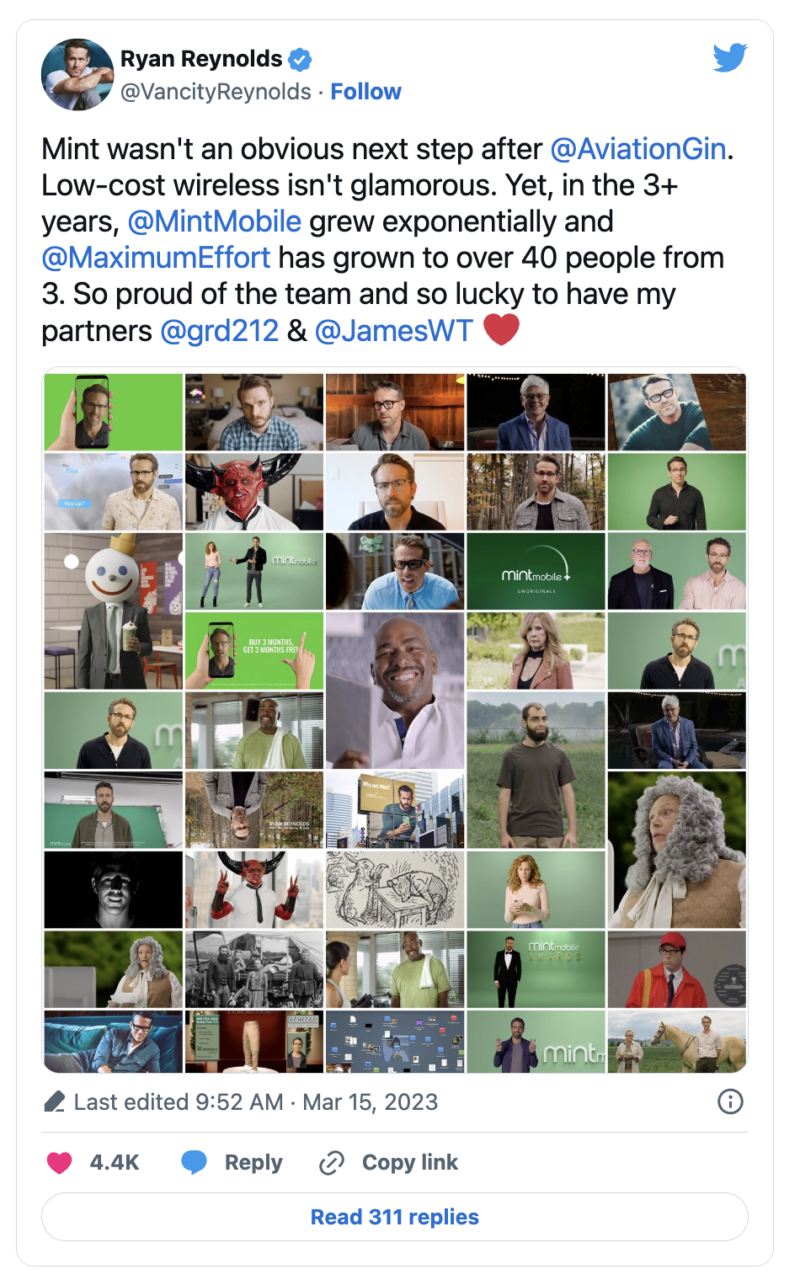
One last thing. Conversion optimization is not a sexy topic, and every time we talk about it or blog about it, we see that very few people want to read about it. But CRO solves a lot of the problems of declining ROI.
Dive Deeper:
* Best Inbound Marketing Agency: The Top 6 Choices for 2023
* Best CRO Agency: Our Top 5 Choices in 2023
* 6 Inbound Marketing Case Studies to Inspire Your Own Strategy
Inbound Marketing Is Changing – Don’t Get Left Behind!
Inbound marketing is a constantly evolving field and businesses need to stay on top of these changes to succeed. By focusing on quality over quantity, using social media, personalizing your content, leveraging AI, embracing a multi-channel approach, building rapport through diverse content formats, and differentiating your brand creatively, you can adapt to the changing landscape of inbound marketing and drive engagement with your audience.
By following these tips, you’ll be better equipped to adapt to the changing landscape of inbound marketing and build a loyal audience.
If you’re seeing a decline in your inbound marketing efforts, Single Grain’s marketing experts can help.👇


